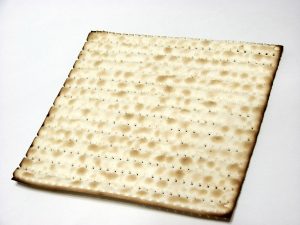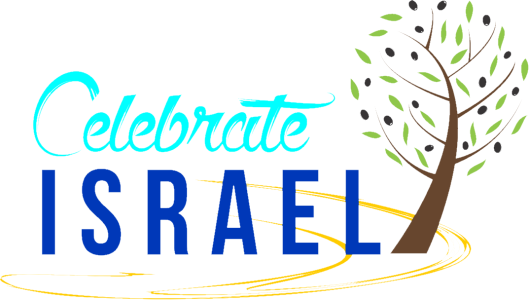Luke 22:7-8, 13-20 (NKJV):
Then came the Day of Unleavened Bread, when the Passover must be killed. And He sent Peter and John, saying, “Go and prepare the Passover for us, that we may eat.” … So they went and found it just as He had said to them, and they prepared the Passover. When the hour had come, He sat down, and the twelve apostles with Him. Then He said to them, “With fervent desire I have desired to eat this Passover with you before I suffer; for I say to you, I will no longer eat of it until it is fulfilled in the kingdom of God.” Then He took the cup, and gave thanks, and said, “Take this and divide it among yourselves; for I say to you, I will not drink of the fruit of the vine until the kingdom of God comes.” And He took bread, gave thanks and broke it, and gave it to them, saying, “This is My body which is given for you; do this in remembrance of Me.” Likewise He also took the cup after supper, saying, “This cup is the new covenant in my blood, which is shed for you.”
When we celebrate communion, we are remembering what is called the Last Supper, the last meal Jesus shared with His disciples before His death. As we can see from this passage in Luke, the Last Supper was actually a Passover meal. The Passover is a significant feast which has been celebrated by the Jews for many, many centuries, down to this present day. It is very much a family meal, and the children are important participants in the celebration.
Passover commemorates the time God redeemed the Israelites out of their bondage in Egypt. When the Israelites were slaves in Egypt and God was preparing to kill the firstborn of the Egyptians as the last of the ten plagues, He commanded the Israelites to kill a lamb and put its blood on the posts and lintels of their doors. Then, when the angel of death came to kill the firstborn, it would “pass over” them and they would be safe. They were, in effect, redeemed by the death of that lamb. They ate the lamb, which was the first Passover meal, and then afterwards they were able to leave Egypt.
We Christians understand that the Passover Lamb is symbolic of Jesus, who came as the Lamb of God to die for us, so that His blood might cover the doors of our lives and so redeem us. Through our own Lamb, the Lamb of God, we have “passed over” from death into life. However, when the Jews celebrate Passover, they are unaware of its fulfilment in Jesus. They are also unaware that many of the rituals they customarily follow while celebrating this traditional feast are also symbols which actually point to Jesus and salvation through Him.
One example is the matza bread which is eaten at Passover. As you can see from the picture, it’s effectively just a big cracker (roughly 20cm each side). Jesus said that the Passover bread represented His body, and we can see that in several ways.

Firstly, the bread is unleavened; that is, it has no yeast in it. The original reason for this is found in Exodus 12:39, where it explains that the Israelites could not wait for their bread to rise as they journeyed out of Egypt, so they quickly baked unleavened bread instead. However, leaven is used in the Bible as a symbol for sin, and likewise, unleavened bread symbolises sinlessness. More specifically, it symbolises the sinless Jesus Christ, Who was the only man to live without sin.
The matza is pierced with many holes This is to prevent any fermentation or rising during preparation and baking. But Isaiah 53:5, referring to Jesus, says (NIV), “He was pierced for our transgressions.” Zechariah 12:10 says, “They will look on Me whom they pierced.”
The matza also has markings on it, where it has browned during baking. These marks look not unlike bruises. Isaiah 53:5 goes on to say (NKJV), “He was bruised for our iniquities.” The holes in the matza form stripes. Isaiah 53:5 also says (NKJV), “By His stripes we are healed.”
There are three special pieces of matza bread which are set aside at the Passover celebration. They are put together in a special pouch with three compartments, one on top of the other, thus in effect the three becoming one. The Jews see these three pieces as representing the Patriarchs Abraham, Isaac and Jacob. Abraham is called Father Abraham and Isaac is his son who he was told to sacrifice. So to Christians these three pieces can also represent the Father, the Son and the Holy Spirit – the Three in One.
During the Passover celebration, the middle matza, which represents the Son, is taken out, that is, removed from the others – so Jesus left His special place with the Father and the Holy Spirit when He came to earth as a man. This matza is broken in two – so Jesus’ body was broken for us. One half is then wrapped in a napkin – so Jesus was wrapped in the grave cloths. This is hidden somewhere in the room, usually under a cushion – so Jesus was hidden in the tomb.
After the main meal is finished, the children will go and hunt for the hidden piece of matza, and bring it out from its hiding place. This symbolises Jesus coming out of the tomb when He was resurrected. This matza is then broken into pieces and distributed among all present, for everyone to eat a piece. This is just like what Jesus was doing when He broke the bread and distributed it to the disciples, calling it His body.
This piece of matza is the last thing eaten at the meal. These days, the Passover Lamb is no longer eaten, because it cannot be ritually slaughtered at the Temple, since the Temple no longer exists. Instead, this last piece of matza represents the Passover Lamb for Jews today. They therefore see it as a symbol of salvation, although they don’t understand that it represents Jesus who saves us.
During the Passover celebration, four cups of wine are drunk. This is always red wine, which symbolises the blood of Jesus. In Luke 22:17-18, when Jesus and His disciples first sat down to the Passover, Jesus took a cup and said, “I will not drink of the fruit of the vine until the kingdom of God comes.” This is the first cup of the Passover, which is called the Cup of Sanctification, which refers to the blessing which is spoken at the beginning of the meal. “To sanctify” means “to set apart” or “to make holy”. Jesus was already holy and sinless, but by drinking this cup and declaring that He will drink it no more, He is setting Himself apart for the task that God has for Him to do, namely, dying on the cross for our sins. We are grateful that through His death, we are sanctified. We are made holy, cleansed from our sin by Jesus’ blood, and we are also set apart for the task that God has for us.
Luke 22:20 records that Jesus “took the cup after supper, saying, ‘This cup is the new covenant in My blood, which is shed for you.’ ” This is the third cup of the Passover, which is drunk after the meal and after the hidden matza has been eaten, and it is called the Cup of Redemption. Jesus is telling the disciples that the shedding of His blood fulfils the redemption God began at that first Passover when He redeemed the Israelites out of Egypt through the blood of the original Passover Lamb. We are grateful that we are saved and redeemed through the shed blood of God’s own Passover Lamb.
When the Jews today eat the matza and drink the cups of wine, they do not understand Who these symbols represent. But when we take communion, we understand that the bread we eat symbolises the body of our Lord Jesus Christ, and that the cup we drink represents His blood which was shed for us. So we eat and drink these emblems in full knowledge of the salvation and redemption which are ours in Him.

